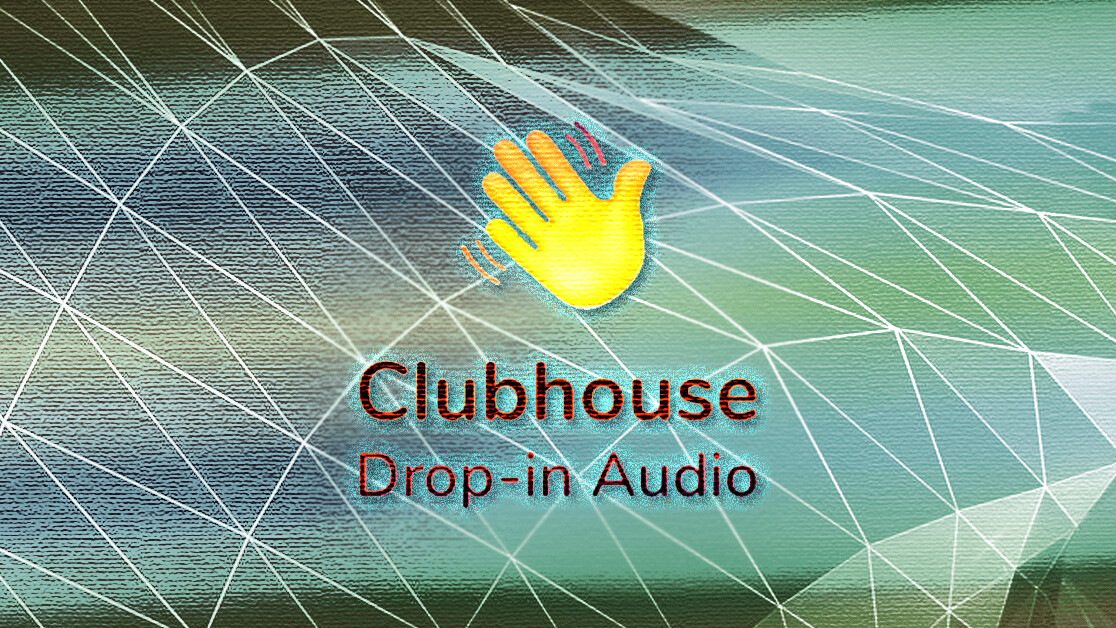
Is Clubhouse all you hear about recently? The pandemic gave us a new way to communicate, and everybody seems to be crazy into it. To me, Clubhouse feels like LinkedIn mixed with Facebook and Skype without those irritating algorithms.
But why did it get so hot so fast? Insider’s Shona Ghosh says “It’s insider-y vibe fuels desperation rather than cool,” and I second it. Its core strength is the need not to miss out on great opportunities.
You can chat with great minds on Clubhouse, like a16z partners, or CEO of Figma, or even Elon Musk, and it feels like you accidentally dialed into a secret meeting. You can hear the latest trends and opinions and even share yours — if a moderator lets you.
In a time when we’re forced to find new ways to communicate and promote ourselves — Clubhouse has real potential, although it could end up being short-lived.
[Read: Oh no… ‘Senior Clubhouse Executive’ is now a thing]
But we have to make the most out of the moment. Currently, Clubhouse is undeniably fresh as it gives that feeling of being a part of an inner circle. The community also seems like a great place to introduce brands and new ventures. From Mark Zukerberg to local VCs and startup founders, everyone is already there.
And after participating in numerous rooms, I’m convinced Clubhouse is the perfect platform for an industry expert, a startup CEO, or even an entire brand to get noticed.
So while it might feel tiring to establish a dynamic profile on yet another platform — I say you bag yourself an invite, fill in your bio, and check out these five reasons to use Clubhouse for your corporate comms.
1. New connections always have value
There’s plenty of places to make ‘connections’ but I’d like to argue that Clubhouse is like LinkedIn — just more friendly.
You can easily find a group related to your industry, blend in quickly, and then expand your horizons by following key individuals in your niche.
For instance, now in the tech category, there are interesting and diverse communities of Ukrainian entrepreneurs, European startups, VCs, AI specialists, and many more. I personally follow the Communications & PR group, Good Time (this is where you can meet tech giants), Tech Talks, Talk Nerdy to Me, and some more VC, tech, and PR-related.
Also, I follow the most prominent tech reporters, so I get notifications if one of them is talking in a room.
2. More authentic way to boost your brand
I find jumping into Clubhouse rooms is like joining a meetup… without the awkward intros.
You can comfortably ‘sit silently in the corner’ until you get used to a room, and once you’re ready to speak, just raise your hand and jump in at the right time. What I do suggest though, is that you use that inactive time in the beginning to make sure you are well prepared. Know what you want to talk about and have a clear idea about what your goal is for the conversation.
Journalists are starting to host weekly rooms discussing tech trends, M&As, and a myriad of other topics. VCs also have rooms to talk about strategies, deals, and multiplicators. These rooms present a good opportunity for you to share your knowledge and your brand’s latest news, celebrate recent achievements — yours or from the industry — and gain new connections.
If you contribute to chats in an interesting way, you’ll be noticed and possibly followed by key players, which ultimately helps establish good relationships in a more authentic way. Clubhouse rooms go far beyond the capabilities of cold emails and have a way bigger reach than in-person networking (back when that was allowed).
And this is already proven to be working. If you have a good pitch, you could end up immediately raise money, just as Kimi Weinttrraub did in the Shark Tank room.
3. Have more control over your message
Joining a good Clubhouse room feels like speaking at a conference. But instead of the hassle that comes with that, you get more control.
Like Mike Butcher puts it: “Why would anyone go to a conference (real or virtual) any more when they can start or join a Clubhouse room with other people in their field to find out what they need to know?”
Why would anyone go to a conference (real or virtual) any more when they can start or join a Clubhouse room with other people in their field to find out what they need to know? One of the remaining business models for a lot of the media industry could be over. pic.twitter.com/dmiw2Dqn76
— Mike Butcher (@mikebutcher) February 13, 2021
Once you have earned attention and followers by participating in various rooms, it’s time to start your own Clubhouse room and invite people to talk. Now you’re putting yourself at the center of the community, which gives you more control over messaging.
My advice is to schedule your room in advance and avoid busy hours. Now you can either make it completely open for everyone to join in, or just ‘social’ so that only your followers can join. Neither is better than the other, it just depends on what’s the goal of your room.
But what should you do in your room? Well, you can launch or promote a product, like Kuki AI did when its chatbot was interviewed live by futurist and Forbes contributor Cathy Hackl on Clubhouse. Or you can go a more open and simple route of sharing the latest milestones or discuss recent figures.
And why would you do this? I think it really helps using the popularity the platform is currently experiencing to catch people’s attention. Journalists, VCs, and other high-profile people seem to be keen to talk on Clubhouse, perhaps its novelty makes it more appealing than yet another Zoom call.
You have to keep in mind though that this novelty could end fast — so get in there before it’s over.
4. Get ideas for content marketing while working on promotion
One of the best ways to describe Clubhouse is that it’s like listening to a podcast in real-time with an opportunity to participate. And what does that mean for you? It means there’s a flood of fresh ideas to be grabbed — but only for those who are tuned in.
Clubhouse doesn’t have a recording option (yet), so everything discussed will sink into oblivion the second the room is over. Unless you do something about it, that is.
Use the ideas you hear to write a feature or op-ed and pitch it to media outlets — or at least a post on your brand’s blog or Medium. Some content can also be used for social media, analytical material, and researches.
So while you’re hanging out on Clubhouse to find promotional opportunities within the platform, pay attention to the ton of information now available there on a range of topics — like how to launch in a new market or how to improve SF. CEOs, VC, and opinion leaders are spending half an hour per day on Clubhouse on average, so don’t miss out on their insights.
5. Stay on message
Now, this last one is more of a warning than a reason, but still important to include.
A lot of us are still in lockdown and almost none of us are able to attend an offline event. So we go on Twitter and rant about how we are tired and bored and that we’ve binged all worthwhile series already. But don’t do that on Clubhouse.
Starting a room just to discuss what you’re doing on a rainy winter day isn’t the best idea in my opinion. I’ve actually received a notification for a room with that name — and of course, there are book communities, groups to discuss movies, and weather — but don’t mix up your presences on Clubhouse as you would maybe do on other platforms.
Don’t scare away valuable followers you gained with an impulse act of starting a random room. Your followers will likely receive a push notification and may unfollow you if you veer into other fields.
This whole Clubhouse hype could end up being short-lived, so stay laser-focused during its peak and get the most out of it for your brand.
Get the TNW newsletter
Get the most important tech news in your inbox each week.




